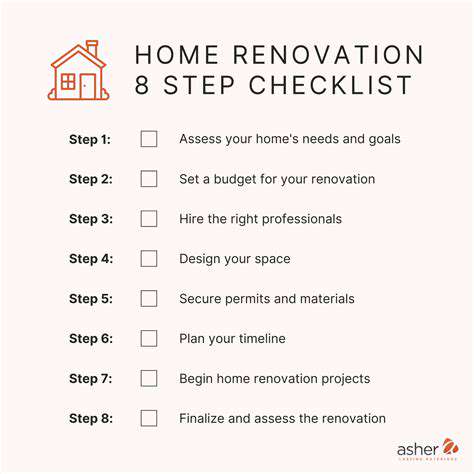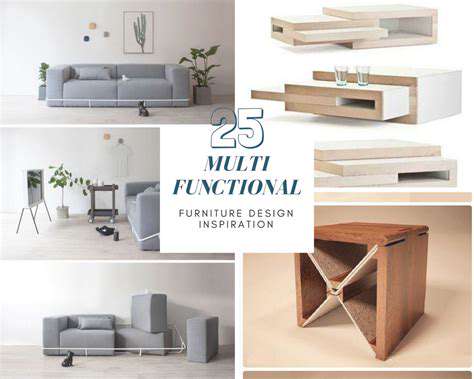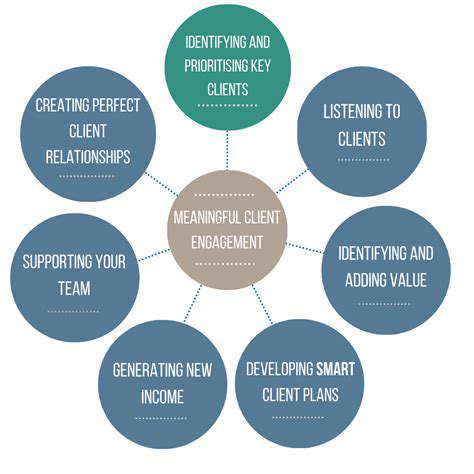How to Create a Trendy Home Interior with Full Package Renovation Tips
Exploring Different Aesthetic Trends
Deciding on a trendy aesthetic for your home isn't just about following trends—it's about discovering what makes your heart sing. The Scandinavian approach with its cozy minimalism might call to you, or perhaps the bold energy of maximalist designs feels more authentic. Pay attention to how different color schemes and furniture styles make you feel—that visceral reaction often points toward your true preferences. Modern designs with crisp lines could resonate, or maybe the layered textures of bohemian spaces feel more like home.
Flip through interior design magazines and save images that stop your scrolling. Notice which elements keep reappearing in your saved folder—that repetition reveals your subconscious style leanings. Try sketching quick room layouts featuring these recurring elements to see how they might work together.
Understanding Your Personal Style
Your home should be a sanctuary that reflects your inner world. Ask yourself what emotions you want to experience when walking through your front door—tranquility? Excitement? Creative inspiration? The answers will guide your aesthetic choices more reliably than any trend report. Notice which friends' homes make you feel most comfortable—what specific qualities create that welcoming atmosphere?
Track your daily routines like an anthropologist studying their own life. Where do you spend mornings with coffee? Evenings with books? These behavior patterns should dictate your design decisions more than Pinterest boards. A reading nook matters more than a formal dining area if that's how you actually live.
Incorporating Personal Touches
That quilt from your grandmother or the pottery from your travels—these aren't just decor items but three-dimensional memories that infuse spaces with meaning. Display them prominently rather than tucking them away. Notice how museums spotlight artifacts with careful lighting—apply that same intentionality to your meaningful objects.
Create a style collage using actual magazine cutouts, fabric swatches, and paint chips you can touch and rearrange. There's something about the tactile experience that digital mood boards can't replicate. Let this evolve organically over weeks—your truest preferences will rise to the surface.
Remember the childhood bedroom you loved or a memorable hotel stay? Recreate those feelings rather than copying the literal decor. It's the emotional resonance that matters most. Your home should feel like a warm hug when you walk in—not a showroom.

Selecting Materials and Finishes: Elevating Your Design with Modern Choices
Choosing the Right Materials
Material selection goes beyond aesthetics—it's about creating sensory experiences. Run your hands along different wood grains in the showroom. Notice how light plays across various stone surfaces at different times of day. The right materials don't just look good—they feel right under your fingertips.
For high-traffic areas, consider materials that develop character with use rather than just wearing out. A leather couch that gains patina or wood floors that show gentle scuffs tell your family's story over time.
Exploring Finishes for a Polished Look
Finishes are like makeup for your home—they enhance natural beauty without overpowering. Test large samples in your actual space at different times. That perfect warm gray at noon might feel cold by lamplight. Observe how finishes change with the dance of natural light throughout the day before committing.
Embracing the Versatility of Wood
Wood brings warmth that synthetic materials struggle to replicate. Visit a lumberyard to appreciate the unique personality of each plank—no two are identical. Consider mixing wood tones intentionally rather than matching perfectly for a collected-over-time look.
Incorporating Metals for a Contemporary Touch
Metals work like punctuation in design sentences. Use them sparingly as accents that catch the eye—drawer pulls, lamp bases, or picture frames. Notice how antique brass tells a different story than polished chrome, even in the same design.
Understanding the Role of Textiles in Modern Design
Textiles soften hard surfaces and absorb sound—they're the unsung heroes of comfortable spaces. Invest in natural fibers that breathe and age beautifully. That linen sofa might wrinkle, but those creases add character no polyester can match.
Furniture Selection and Styling: Completing the Trendy Look

Choosing the Right Furniture
Furniture buying deserves the same consideration as choosing a pet—it will share your life for years. Sit in that chair for at least fifteen minutes before deciding. Does it still feel comfortable? Can you imagine curling up with a book years from now?
Create paper templates of potential furniture pieces and arrange them on your floor. This old-school trick prevents the common disappointment when perfectly proportioned showroom pieces overwhelm your actual space.
Understanding Style and Design
Notice which furniture designs make you instinctively run your hands along their lines. That physical response often indicates a deeper connection than intellectual appreciation of a style. Visit design museums to understand the history behind different movements—context deepens appreciation.
Matching Color and Texture
Collect paint chips, fabric swatches, and material samples in a portable kit. View potential purchases against these actual samples rather than relying on memory. Natural daylight reveals color relationships artificial lighting obscures.
Functionality and Ergonomics
Test furniture the way Olympic judges score dives—with specific criteria. Can you reach side tables comfortably from seating? Is there adequate legroom? Do drawers open smoothly? These practical considerations matter more in daily life than photogenic qualities.
Budget and Sustainability
Consider the cost-per-use equation—a $2000 sofa used daily for a decade costs about 55 cents per day. Quality pieces often prove more economical long-term than disposable furniture. Explore local artisans—their work supports communities while offering unique pieces.











